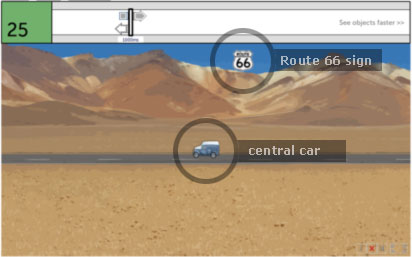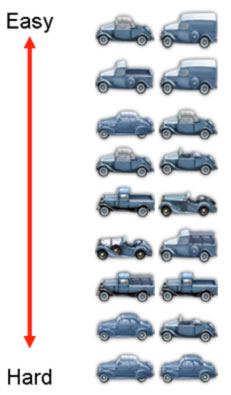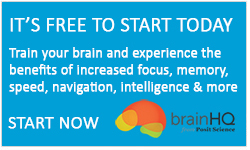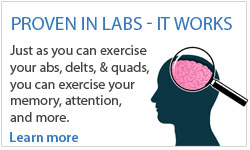![]() Double Decision is the current version of the speed training cognitive intervention used in the ACTIVE study. To learn more about the study and try the exercise, please click here.
Double Decision is the current version of the speed training cognitive intervention used in the ACTIVE study. To learn more about the study and try the exercise, please click here.
If a skateboarder suddenly darted out from the side of the road and crossed right in front of you while you were driving down the street, would you be able to stop in time?
The answer depends, in part, on what is known as your “useful field of view” which is the area you can accurately and quickly see details of when looking straight ahead. If you have a small useful field of view it means your brain will take longer to notice what is in your periphery. If you have a large useful field of view it means you are able to see more details faster. Ultimately the size of your useful field of view might make the difference between stopping your car in time or hitting the unfortunate skateboarder.
Useful field of view, for the average adult, begins to shrink as they age. Your useful field of view can also shrink as a result of certain clinical problems.

To extend your useful field of view, the Double Decision exercise uses uniquely proven visual training and assessment technology called UFOV™, which has been funded by the National Institutes of Health and the subject of numerous studies.
In order to gradually expand your useful field of view outwards and extract information more quickly, the UFOV  technology in Double Decision gets you to work at the edges of your useful field of view by focusing your attention on a task in the middle of the screen. For example, while choosing which of two cars you observed appearing briefly in the centre of the screen you have to also notice where a Route 66 road sign appears around the periphery of your screen.
technology in Double Decision gets you to work at the edges of your useful field of view by focusing your attention on a task in the middle of the screen. For example, while choosing which of two cars you observed appearing briefly in the centre of the screen you have to also notice where a Route 66 road sign appears around the periphery of your screen.
As you practice the task will change and get harder in a variety of ways in order to challenge your brain to improve the reliability, speed, and size of your useful field of view. Features of Double Decision include: 
- Wrong answers will appear in the periphery to distract from the Route 66 road sign that initially appears on its own.
- Route 66 road sign will move further away from the centre of the screen.
- The cars in the middle of the screen will become more similar making it more difficult to select the correct car.
- To make it harder to identify subtle differences between the cars and the road signs the screen’s background will get more complicated.
- The amount of time each central car and Route 66 sign appears on screen will speed up when you are performing well.
Double Decision exercise can bring significant benefits to your everyday life by expanding your useful field of view. Through a variety of studies, including those in the Journal of the American Medical Association, the UFOV technology has been shown to speed up visual processing, improve driving safety, help people retain their independence, and even make the busy demands of modern life easier to manage.






 English
English
 Français
Français


